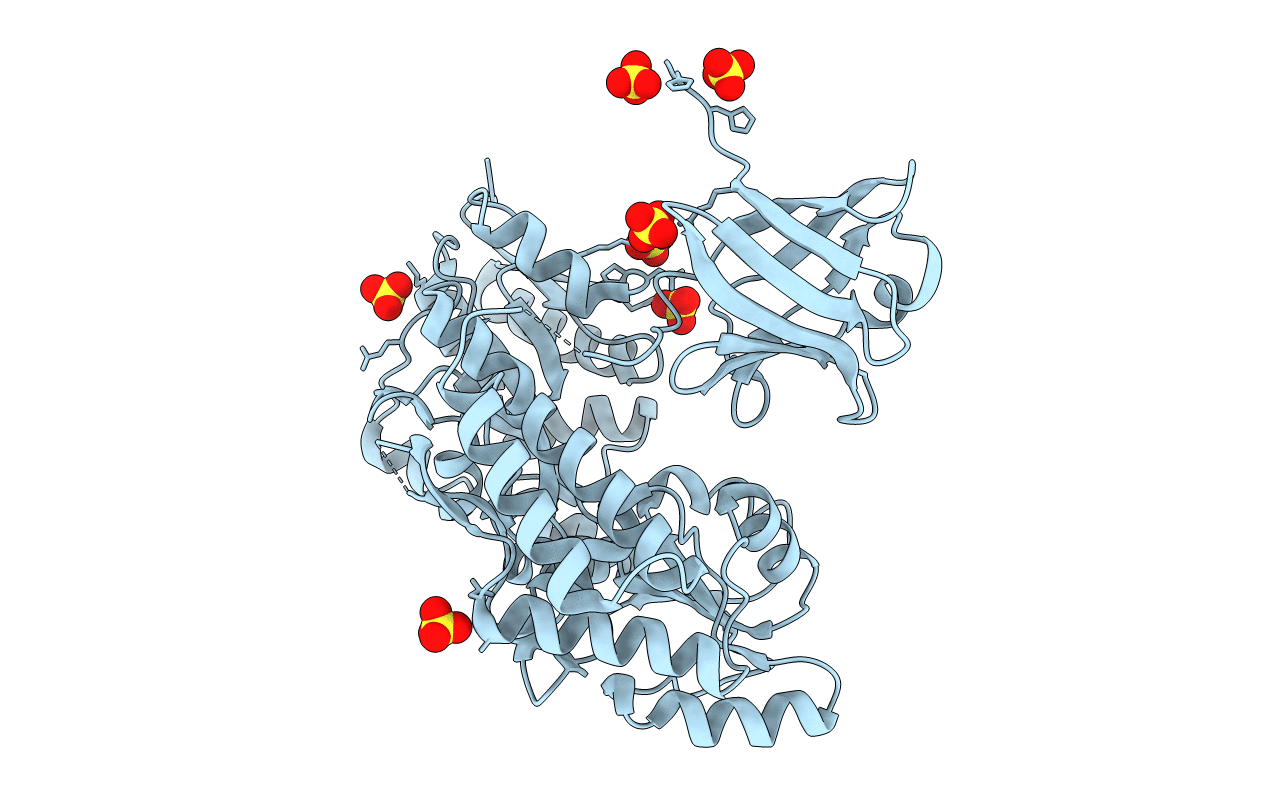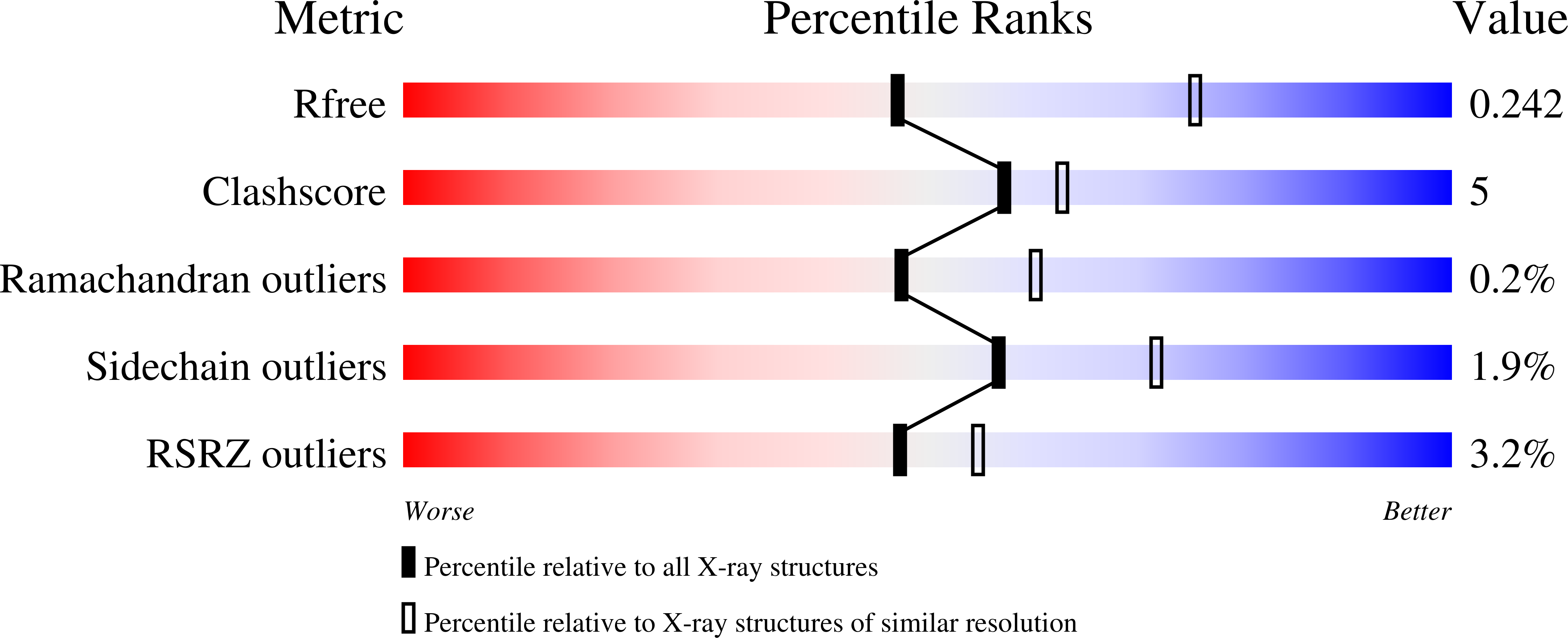
Deposition Date
2021-04-15
Release Date
2022-04-20
Last Version Date
2024-10-23
Entry Detail
PDB ID:
7MHW
Keywords:
Title:
Crystal structure of the protease inhibitor U-Omp19 from Brucella abortus fused to Maltose-binding protein
Biological Source:
Source Organism:
Escherichia coli (Taxon ID: 562)
Brucella abortus (Taxon ID: 359391)
Brucella abortus (Taxon ID: 359391)
Host Organism:
Method Details:
Experimental Method:
Resolution:
2.55 Å
R-Value Free:
0.24
R-Value Work:
0.20
R-Value Observed:
0.20
Space Group:
I 41 2 2


